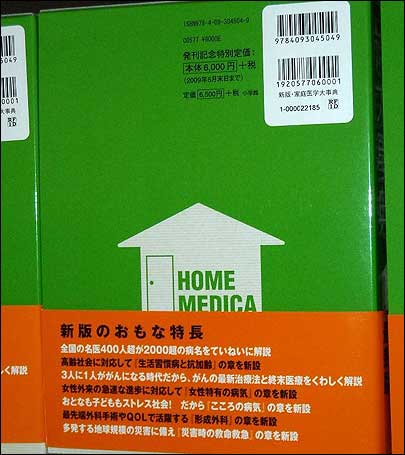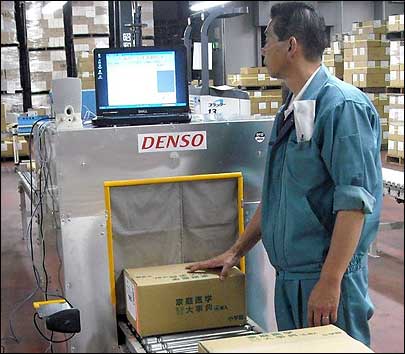Jan 05, 2009Japanese publisher Shogakukan is employing RFID technology to help encourage its retailers to limit their book orders to the quantities they can realistically sell, thereby reducing the number of books those companies return to the publisher due to overstocking their stores.
The system, provided by Japanese software consulting firm Suuri-Keikaku using UPM Raflatac UHF EPC Gen 2 Crab RFID inlays, helps the publishing house keep closer tabs on its books if they are returned, as well as reduce costs related to those returned, unsold volumes. At present, the return rate of books from retail sellers in Japan is approximately 43 percent, which costs publishers in both the shipping and overproduction of those titles. In some cases, publishers may also refuse a retailer's orders because they are unwilling to print extra quantities when there is a high risk of returns.

Shogakukan began deploying the system with its recently published Home Medical Dictionary. The publisher, under its parent company, Hitotsubashi Group, has produced learning magazines for elementary school children since 1922, but has recently been expanding to general magazines, and now publishes books such as dictionaries and encyclopedias.
Bookstores that sell Shogakukan titles can choose between one of two options when ordering. In the traditional scenario, the stores order books on consignment, and can then return unsold items to Shogakukan without incurring an expense. In this case, bookstores may tend to order more than they require, since need not pay for the books until they sell them, and since there is no penalty for failing to sell the entire order—they can simply return any items that do not sell. Shogakukan not only must pay extra to ship larger-than-needed book orders to the retailers, it also ends up printing more copies than the stores can actually sell.
The second option is a non-consignment arrangement in which a store purchases the books outright from the publisher. In this scenario, the retailer receives a higher profit margin for each copy it sells, though since it has already purchased the books, it must seek a refund for each one returned, making the return process less desirable (since it requires additional time and paperwork for stores) and giving the retailers more incentive to order a realistic number of books. This option may not always be a preferable choice for a store when ordering a title that might be considered "high-risk" (that is, one the retailer is unsure will sell). In such a case, the consignment choice would be more beneficial.
For a non-consignment order, each book returned must be manually checked by Shogakukan employees for damage before refunds can be issued to the bookstore. Without an RFID system, the staff would need to either scan a bar-coded stock-keeping unit (SKU) number on each book, or key in the item's ISBN number to check the company's back-end system for records indicating whether the store had purchased such a title. All of this is a labor-intensive process.
Whether sold through consignment or non-consignment, each medical dictionary is packaged in a box to which an EPC Gen 2 tag has been attached with a weak adhesive, so it can be removed at the point of sale before the customer leaves the store. The tag stores a unique ID number linked to data regarding the book in Shogakukan's back-end system, such as its title and publishing date.

The publisher attaches a label with a bar-coded serial number to each carton in which the books are packed, then moves the boxes through a Denso Wave RFID reader tunnel and bar-code scanner prior to shipping. A carton's bar-coded label is scanned at the same time that the books' RFID tags are read, thereby linking the box's ID number with those of the books. That data is then downloaded onto Shogakukan's database, using Suuri-Keikaku software, indicating the carton has been shipped and associating it with the store that will receive it.
When the carton arrives at the retail location, its bar-code label is scanned, and that data is stored in the store's back-end system, indicating the shipment has been received. For this purpose, because most bookstores lack RFID readers, the bar-coded labels are necessary to enable retailers to process the receipt of their shipments. Stores that do have RFID interrogators, however, have the option of reading the RFID tags on the dictionaries to indicate a shipment has been received.
If non-consignment books need to be returned, the store sends them back to Shogakukan. As the items are received, they again pass through the RFID reader tunnel, informing the system that the specific copies have been returned. Employees can then examine each book's quality and input any data regarding its condition in the Suuri-Keikaku software, after which the publisher's ERP system calculates the appropriate refund to which the retailer is entitled.
According to Okano, some book retailers served by Shogakukan have been utilizing Panasonic RFID readers at their stores to test how they could take advantage of the RFID tags. This includes Book House Jinbocho, managed by Showa Tosho, another division of the Hitotsubashi Group. The stores are using the interrogators to scan the books' tags as shipments from Shogakukan are received, as well as at the point of sale, where the tags are then removed.

